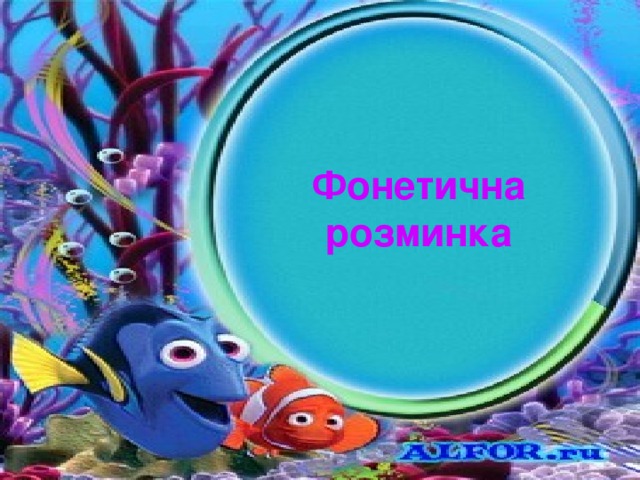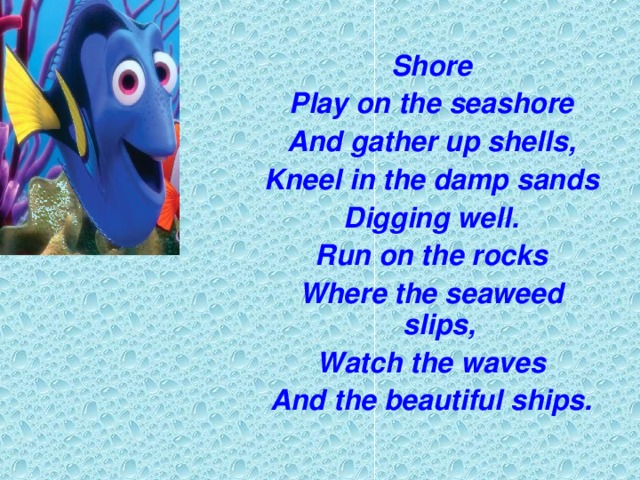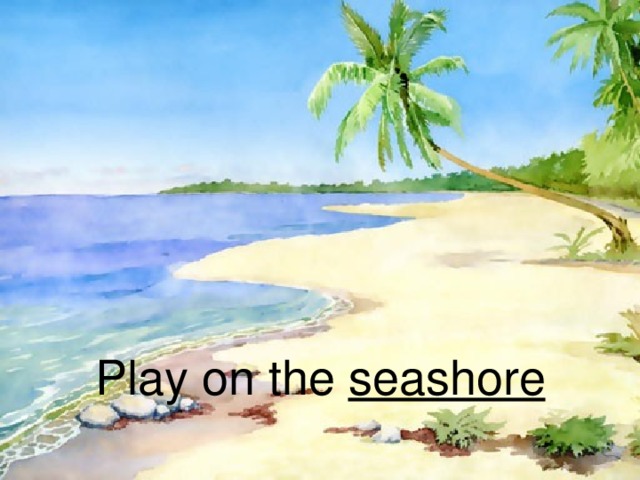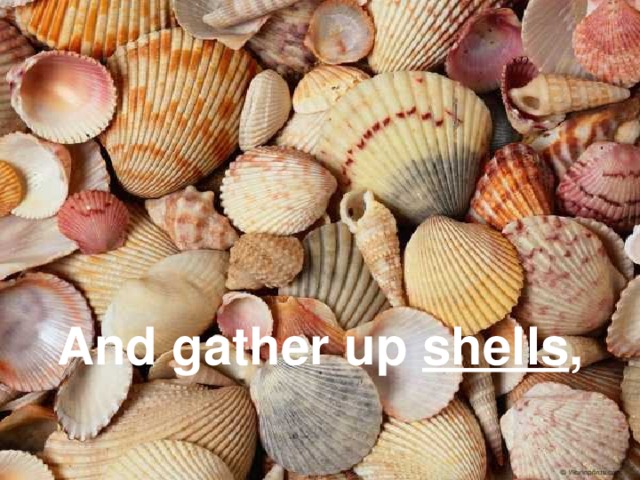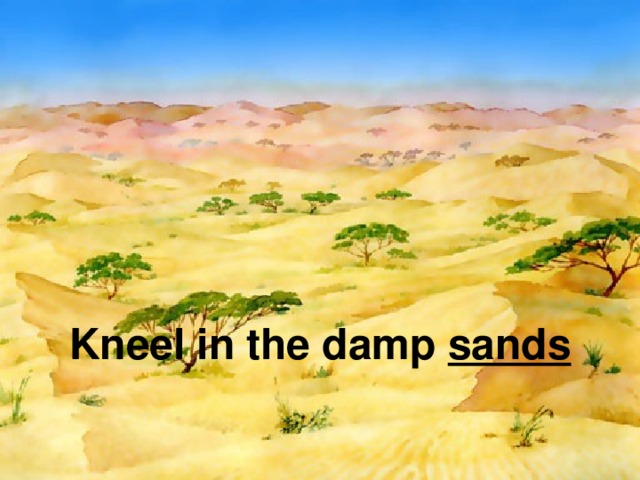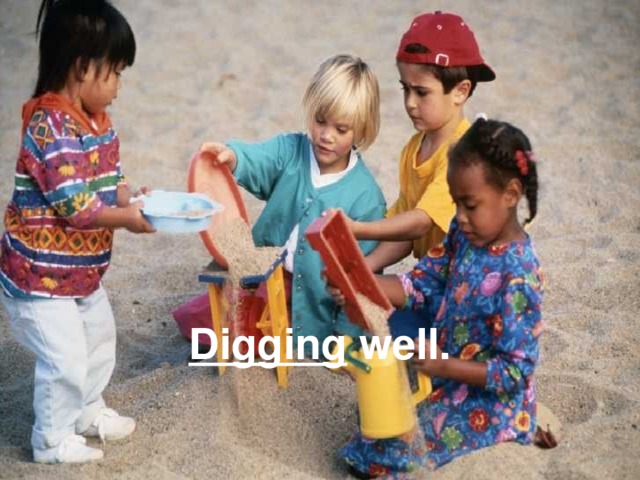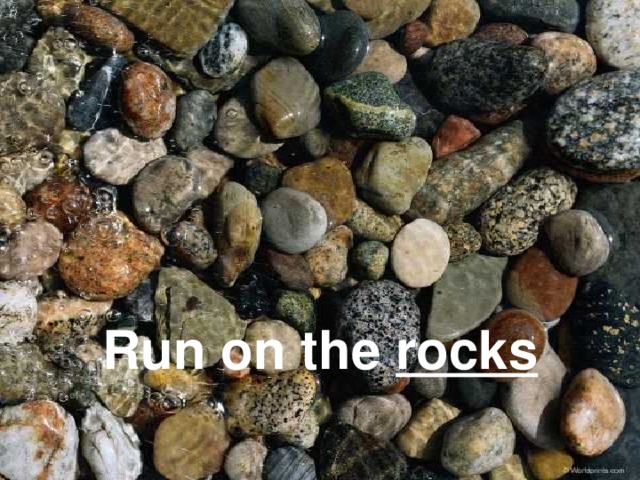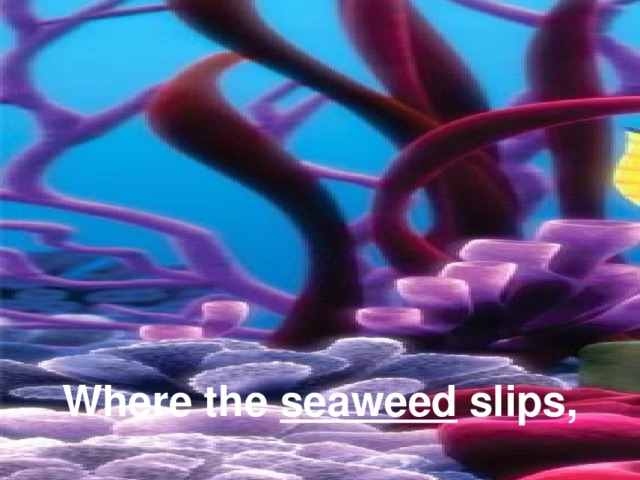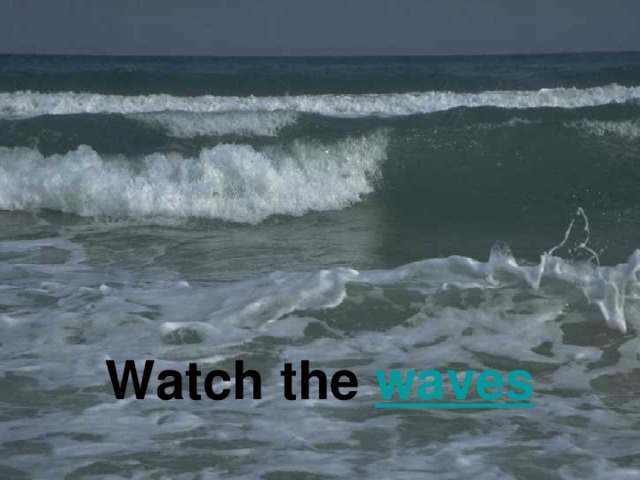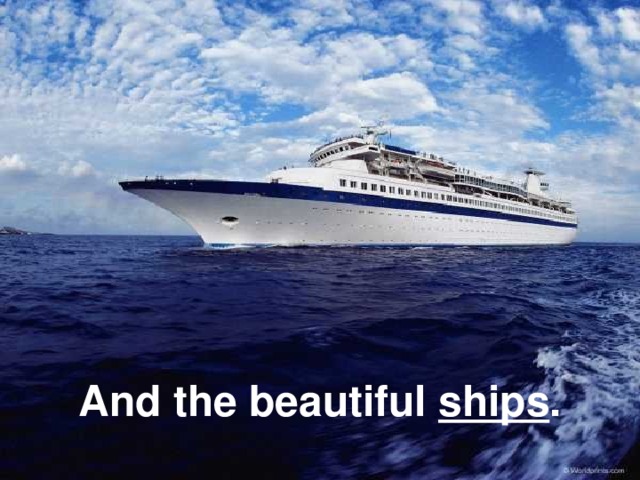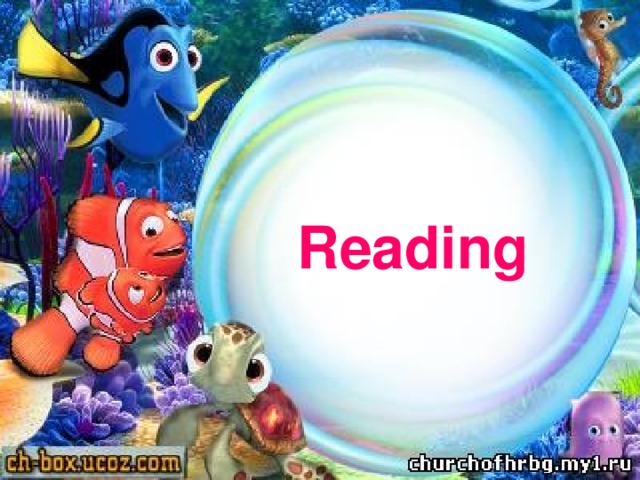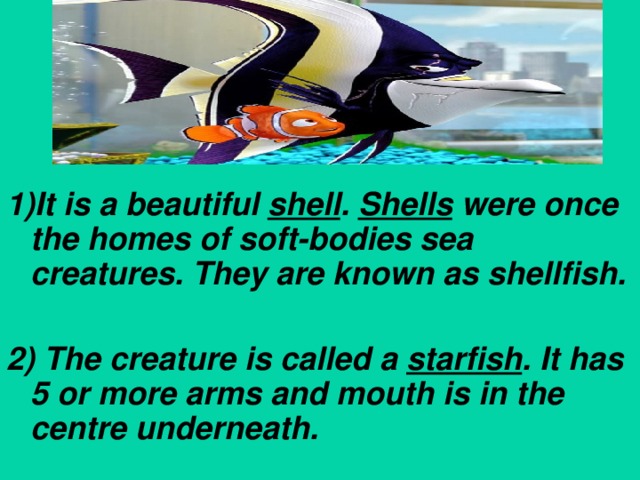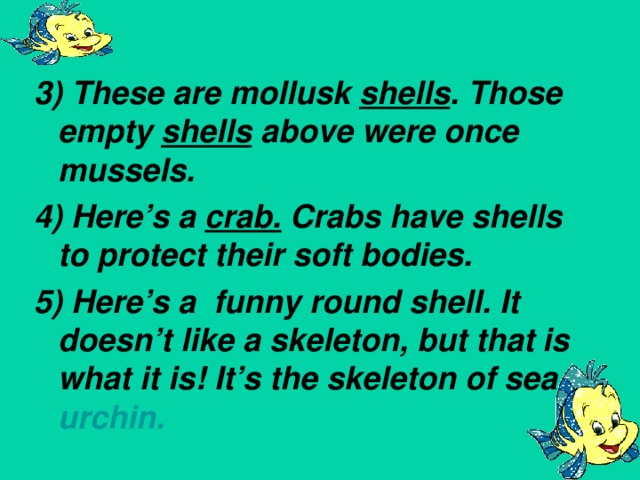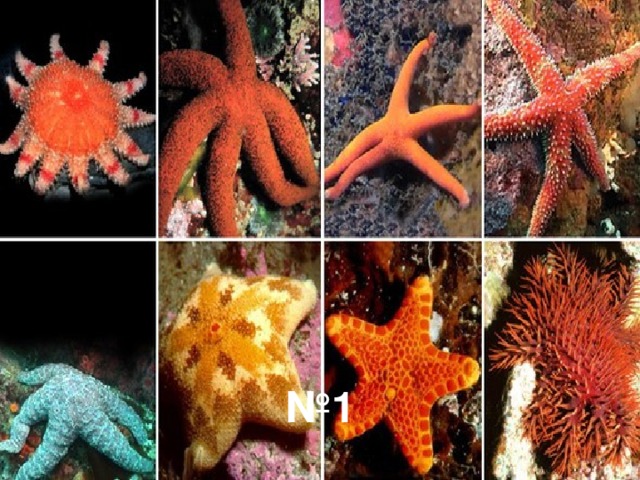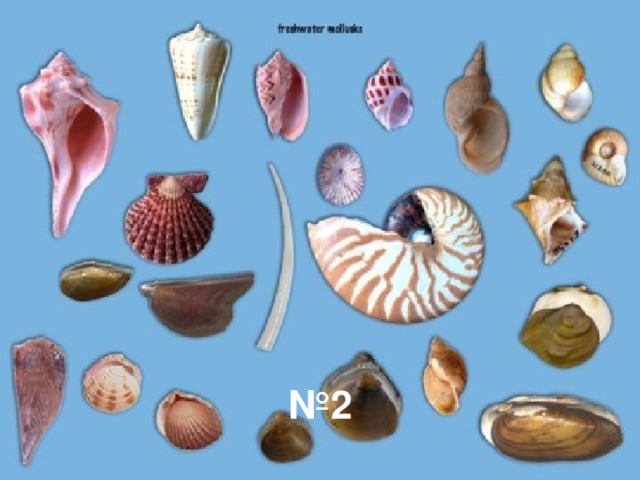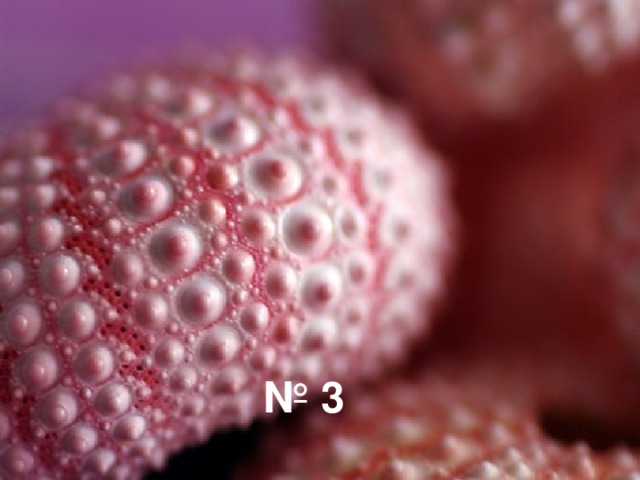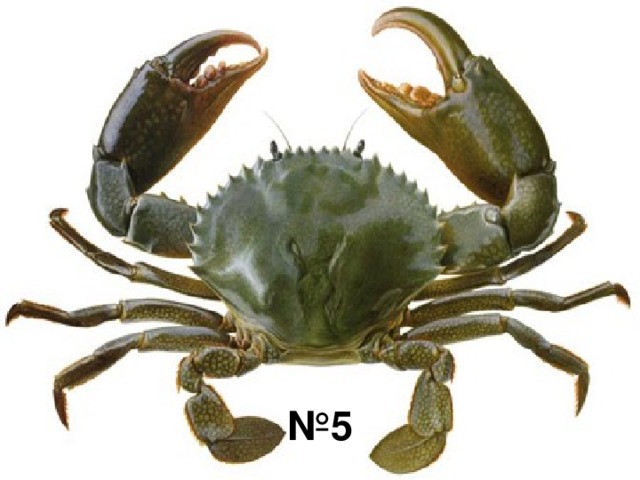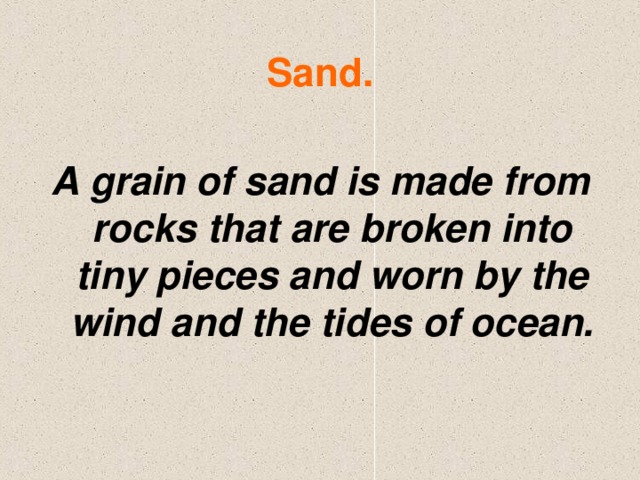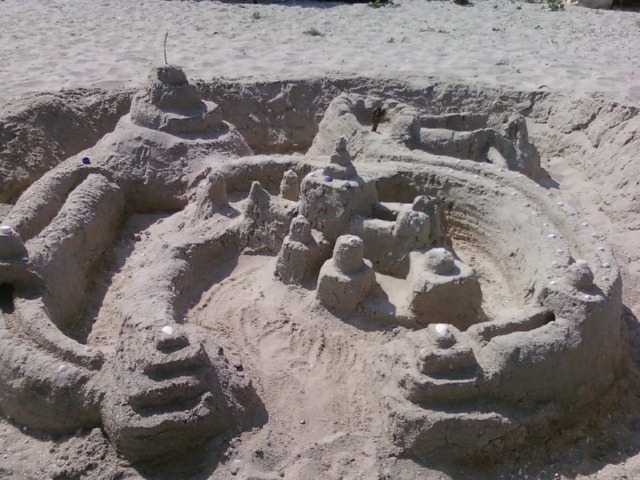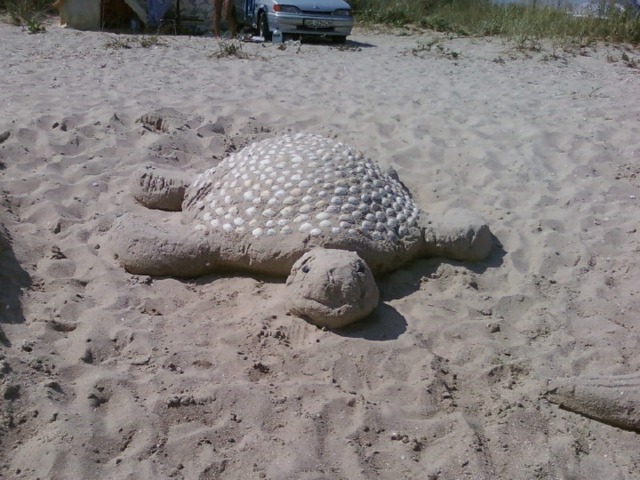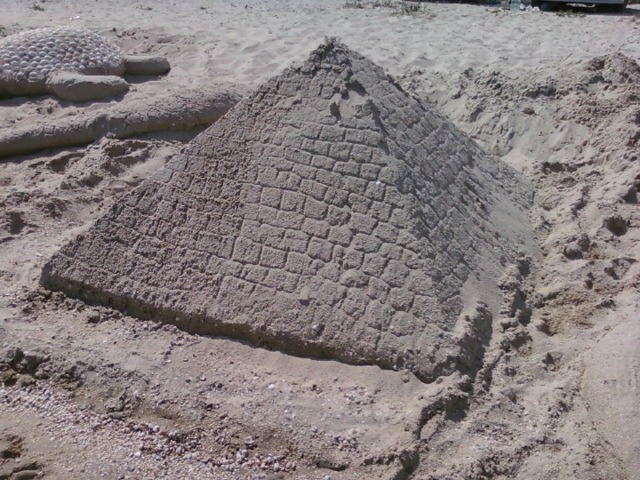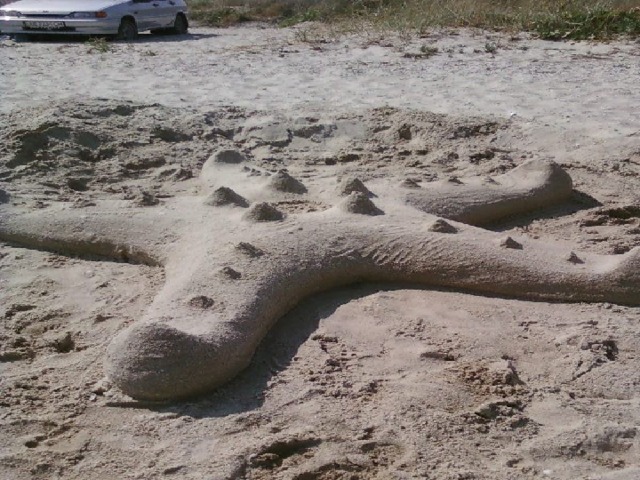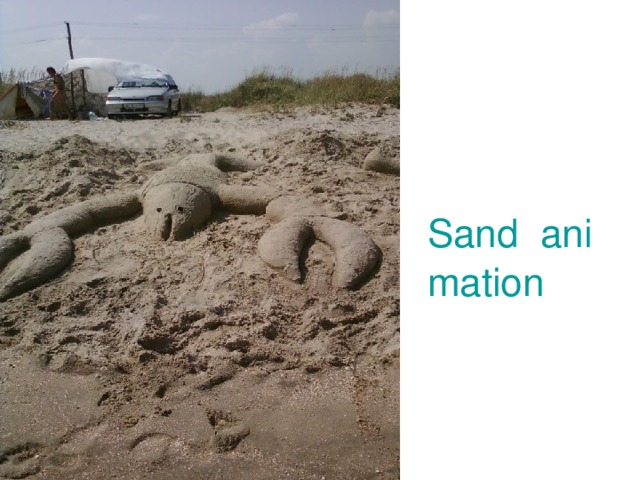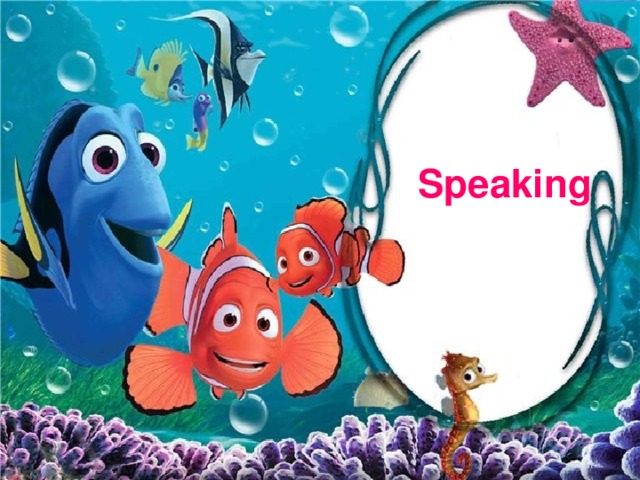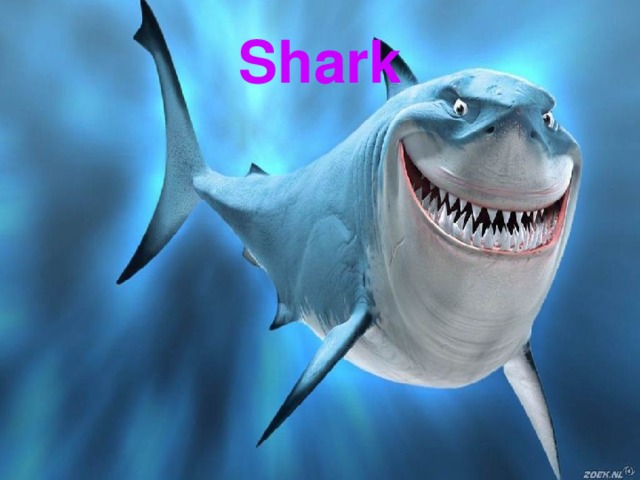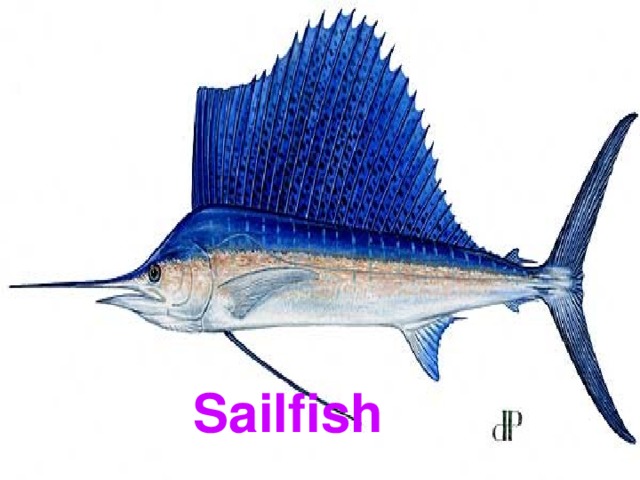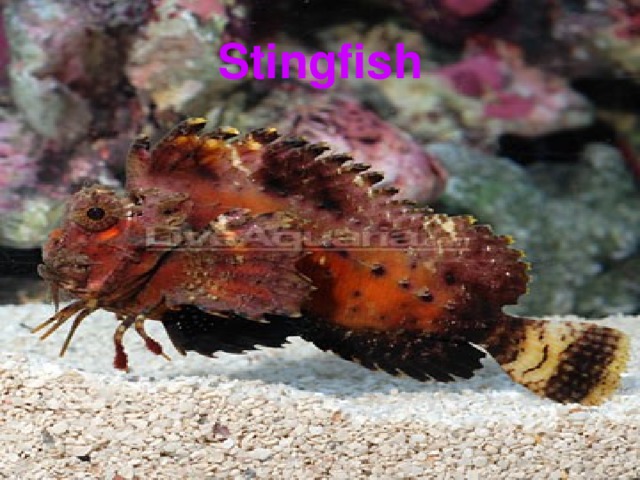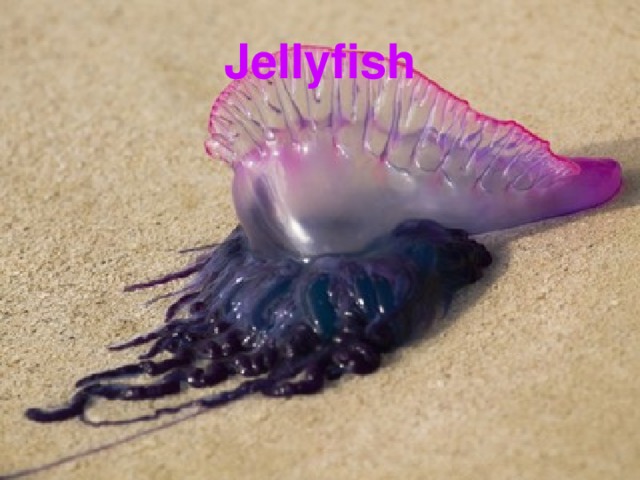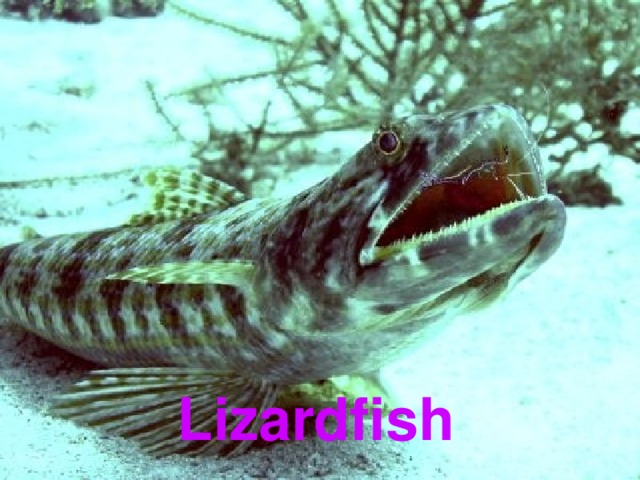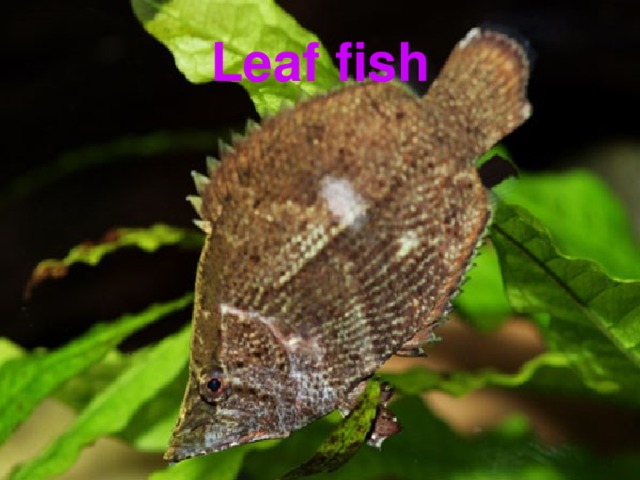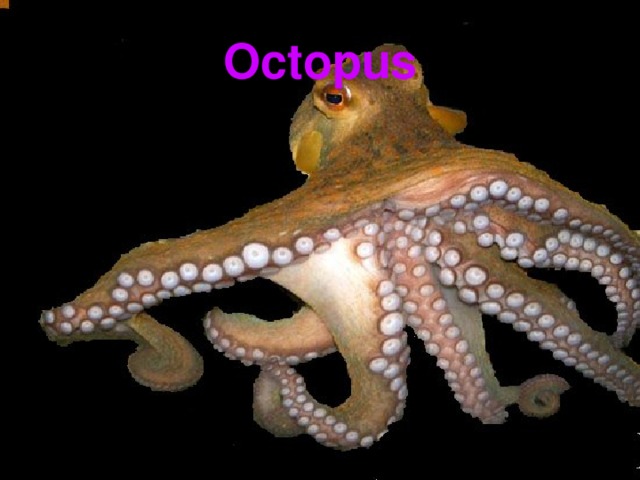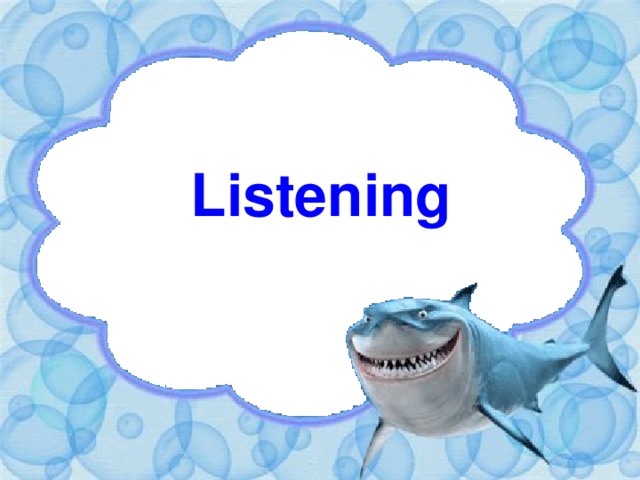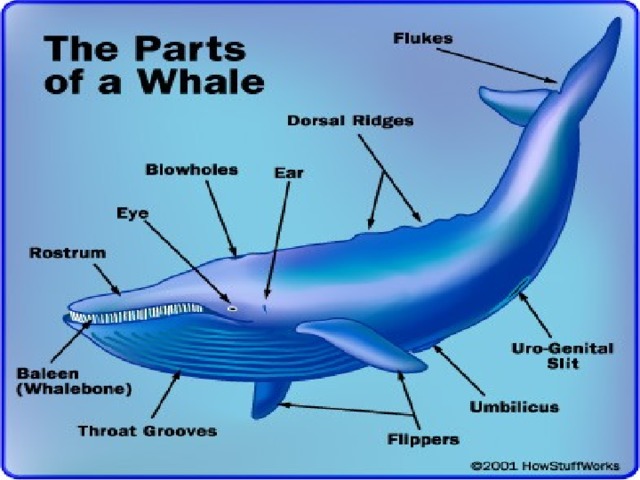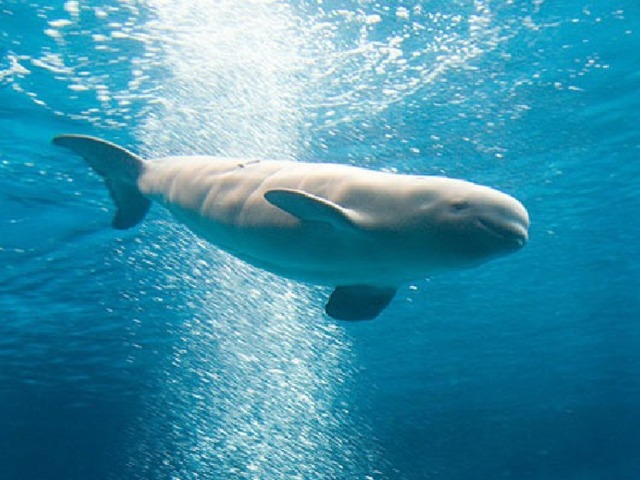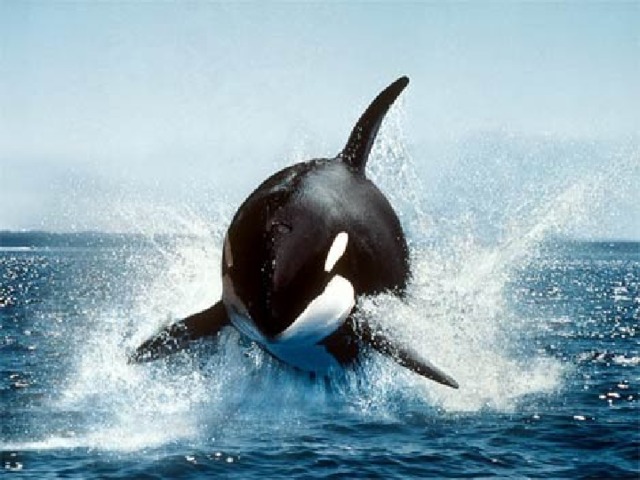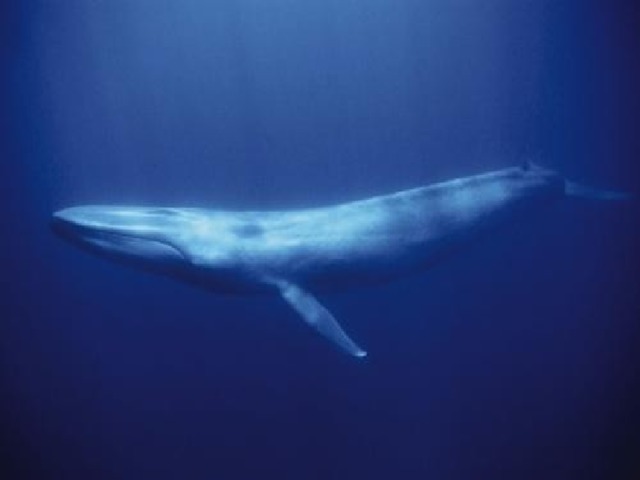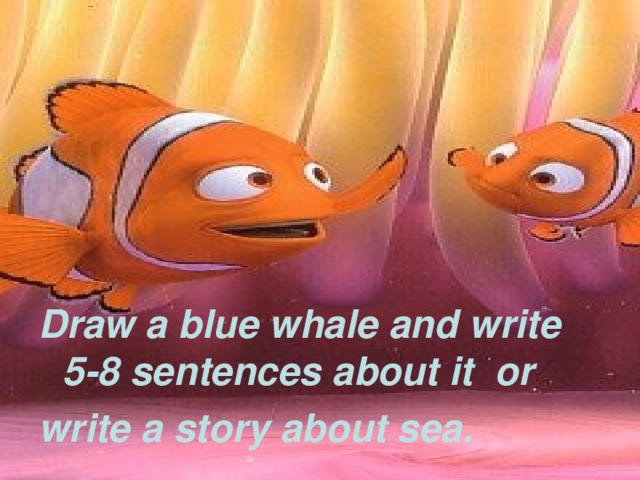Урок «Підводне плавання»
Тема: Канікули біля моря.(5 клас)
Мета: Вивчити лексику за темою «Море».
Формувати навички аудіювання та читання.
Тренувати учнів у декламуванні віршів.
Знайомити з навколишнім світом.
Розвивати пізнавальний інтерес, пам'ять, увагу, чуття мови.
Розвивати творчі здібності учнів. Навчати любити природу.
Виховувати позитивне ставлення до вивчення англійської мови.
Прищеплювати любов до англомовної поезії.
Обладнання: Зображення морського узбережжя на дошці, , завдання для контролю аудіювання (Н02), словники, DVD-програвач .
ХІД УРОКУ
І. ПІДГОТОВКА ДО СПРИЙНЯТТЯ ІНШОМОВНОГО МОВЛЕННЯ
1. Привітання. Уведення в іншомовну атмосферу. Учитель вітає клас, учні, у свою чергу, вітають учителя. Бесіда з дітьми.
Т: Do you like sunny days? Where do you like to be? What do you like to do?
2. Повідомлення теми та мети уроку. Т: Do you like to be near the sea? What do you like to do? Учні відповідають на запитання.
Т: Today we'll speak about the holidays near the sea.
3. Фонетична розминка. Діти читають вірш. На відео — морські краєвиди.
SHORE
Play on the seashore
And gather up shells,
Kneel in the damp sands
Digging well.
Run on the rocks
Where the seaweed slips,
Watch the waves
And the beautiful ships.
II. ОСНОВНА ЧАСТИНА УРОКУ
1. Читання текстів. Т: Let's take a walk on the beach and see what we can find. Учні в парах читають текст, потім знаходять до нього малюнок Через 5 хвилин вони презентують свій текст.
НОх:
1) It's a beautiful shell. Shells were once the homes of soft-bodied sea creatures. They are known as shellfish. They look like snails. There are thousands of shellfish living in the sea.
2) This creature is called a starfish. It has five or more arms and its mouth is in the centre underneath. Some of them are brightly coloured. The smallest starfish can be only 2 cm across.
3) These are mollusk shells. Those empty shells above were once mussels. Live mussels tend to cling to rocks, but the empty shells lie about on the shore. The razor shells are often found on sandy beaches.
4) Here's a crab. Crabs have shells to protect their soft bodies. As they grow bigger they have to shed their shells and grow new ones. This happens several times.
5) Here's a funny round shell. It doesn't look like a skeleton, but that's what it is! It's the skeleton of a sea urchin. A sea urchin is a spiny animal that lives in the water. They are green or black.
2. Перевірка домашнього завдання.
3. Роботи з піску.
Т: Do you know what is sand? No? Listen to me.
A grain of sand is made from rocks that are broken into tiny pieces and worn down by the wind and the tides of the ocean. It takes billions of these miniature rocks to make a beach of sand. If you look at the beach you may find small stones and pebbles.
4. Говоріння .
T: What can we see under the sea?
1) SHARKS
Most sharks are fierce hunters. They catch fish, squid and even seals with their huge jaws. Sharks have rows of dagger-sharp teeth — when a tooth wears out, it is replaced by another.
2) FLYING FISH
Have you ever heard, about a fish that is able to fly? Flying fish can glide 100 m through the air on their wing-like fins!
3)SAILFISH
The sailfish is the fastest creature in the sea. It can speed through the water at 109 km/h — 12 times faster than any Olympic swimmer.
4) STINGFISH
A stingfish is flat like a pancake. Its skin is sand-coloured. It hides on the shallow, sandy bottom of the sea.
5) MAN-OF-WAR
A Portuguese man-of-war isn't really a jellyfish. It's actually a floating colony of tiny animals. Together they form all the different parts of the man-of-war — from its blue 'sail' right down to the 9 m long tentacles.
6) LIZARDFISH
A long, large fish is called lizardfish. It's mud-coloured and speckled just like the bottom of the deep ocean. It likes to hide there.
7) SOUTH AFRICAN LEAF FISH
A South African leaf fish looks like a leaf floating along with the current.
8) OCTOPUS
An octopus can change colours. When it swims through green seaweed, the octopus is green. When it swims through the ocean depth, it's brown.
9) HERMIT CRAB
A hermit crab lives in an empty shell. For more protection, the crab attaches an anemone to its shell. The anemone is an animal that looks like a flower.
5. Аудіювання.
T: Let’s listen about the biggest animals in the world.
Т: The sea is full of strange and unusual creatures. Some are very tiny, others are incredibly huge. Let's watch some of these creatures.
BLUE WHALES
A blue whale is the largest animal that has ever lived. It is bigger than the biggest dinosaurs it is not a fish, it's a mammal. It means that it needs to breathe air to stay alive. There are not very many blue whales left in the world today because for a long time people hunted these whales for meat, oil and whalebone.
A full-grown blue whale can weigh as much as 120,000 kilograms. That's more than 50 full-grown elephants!
The blue whale is a great creature that eats tiny sea animals and plants called plankton
whales talk to each other by singing. Their songs can last as long as two hours. They sing alone and they sing together. Whale songs are full of bubbles and squeaks, grunts and groans.
Baby blue whales weigh more than most cars when they are born! Mother whales take good care of their babies Swimming close to them and teaching them all about life in the sea.
3) Перевірка розуміння змісту тексту.
HO,:
Answer the questions.
— What are the biggest animals in the world?
— How many whales are there in the world? Why?
— How huge is a whale?
— What does a whale eat?
— How do they talk?
--How long can a whale's song last?
A. Find the end of the sentence.
B. Put them in the right order.
1. There aren't very many blue whales left in the world today...
2. Mother whales take good care...
3. A full-grown blue whale can...
4. A blue whale is the largest animal...
5. Whales talk to each other by...
6. It is bigger than...
7. The blue whale is a gentle creature that...
8. Whale songs are full of ...
9. They swim close to them and teach them...
a)... eats tiny sea animals and plants called plankton.
b) ... because for a long time people hunted these whales for meat
and oil and whalebone, c)... that has ever lived, d)... all about life in the sea. e)... weigh 120,000 kilograms, f)... the biggest dinosaurs, g)... bubbles and squeaks, grunts and groans, h)... singing! i)... of their babies.
Answers:
A: lb, 2i, 3e, 4c, 5h, 6f, 7a,8g,9d.
B: 4,6,1,3,7,5,8,2,9. .
заключна частина уроку
1. Домашнє завдання.
T: Draw a blue whale and write 5-8 sentences about it or write a story about the sea.
2. Підведення підсумків уроку.
Также к конспекту добавляю звуковое сопровождение и презентацию.
Просмотр содержимого документа
«конспект5 клас»
Урок «Підводне плавання»
Тема: Канікули біля моря.(5 клас)
Мета: Вивчити лексику за темою «Море».
Формувати навички аудіювання та читання.
Тренувати учнів у декламуванні віршів.
Знайомити з навколишнім світом.
Розвивати пізнавальний інтерес, пам'ять, увагу, чуття мови.
Розвивати творчі здібності учнів. Навчати любити природу.
Виховувати позитивне ставлення до вивчення англійської мови.
Прищеплювати любов до англомовної поезії.
Обладнання: Зображення морського узбережжя на дошці, , завдання для контролю аудіювання (Н02), словники, DVD-програвач .
ХІД УРОКУ
І. ПІДГОТОВКА ДО СПРИЙНЯТТЯ ІНШОМОВНОГО МОВЛЕННЯ
1. Привітання. Уведення в іншомовну атмосферу. Учитель вітає клас, учні, у свою чергу, вітають учителя. Бесіда з дітьми.
Т: Do you like sunny days? Where do you like to be? What do you like to do?
2. Повідомлення теми та мети уроку. Т: Do you like to be near the sea? What do you like to do? Учні відповідають на запитання.
Т: Today we'll speak about the holidays near the sea.
3. Фонетична розминка. Діти читають вірш. На відео — морські краєвиди.
SHORE
Play on the seashore
And gather up shells,
Kneel in the damp sands
Digging well.
Run on the rocks
Where the seaweed slips,
Watch the waves
And the beautiful ships.
II. ОСНОВНА ЧАСТИНА УРОКУ
1. Читання текстів. Т: Let's take a walk on the beach and see what we can find. Учні в парах читають текст, потім знаходять до нього малюнок Через 5 хвилин вони презентують свій текст.
НОх:
1) It's a beautiful shell. Shells were once the homes of soft-bodied sea creatures. They are known as shellfish. They look like snails. There are thousands of shellfish living in the sea.
2) This creature is called a starfish. It has five or more arms and its mouth is in the centre underneath. Some of them are brightly coloured. The smallest starfish can be only 2 cm across.
3) These are mollusk shells. Those empty shells above were once mussels. Live mussels tend to cling to rocks, but the empty shells lie about on the shore. The razor shells are often found on sandy beaches.
4) Here's a crab. Crabs have shells to protect their soft bodies. As they grow bigger they have to shed their shells and grow new ones. This happens several times.
5) Here's a funny round shell. It doesn't look like a skeleton, but that's what it is! It's the skeleton of a sea urchin. A sea urchin is a spiny animal that lives in the water. They are green or black.
2. Перевірка домашнього завдання.
3. Роботи з піску.
Т: Do you know what is sand? No? Listen to me.
A grain of sand is made from rocks that are broken into tiny pieces and worn down by the wind and the tides of the ocean. It takes billions of these miniature rocks to make a beach of sand. If you look at the beach you may find small stones and pebbles.
4. Говоріння .
T: What can we see under the sea?
1) SHARKS
Most sharks are fierce hunters. They catch fish, squid and even seals with their huge jaws. Sharks have rows of dagger-sharp teeth — when a tooth wears out, it is replaced by another.
2) FLYING FISH
Have you ever heard, about a fish that is able to fly? Flying fish can glide 100 m through the air on their wing-like fins!
3)SAILFISH
The sailfish is the fastest creature in the sea. It can speed through the water at 109 km/h — 12 times faster than any Olympic swimmer.
4) STINGFISH
A stingfish is flat like a pancake. Its skin is sand-coloured. It hides on the shallow, sandy bottom of the sea.
5) MAN-OF-WAR
A Portuguese man-of-war isn't really a jellyfish. It's actually a floating colony of tiny animals. Together they form all the different parts of the man-of-war — from its blue 'sail' right down to the 9 m long tentacles.
6) LIZARDFISH
A long, large fish is called lizardfish. It's mud-coloured and speckled just like the bottom of the deep ocean. It likes to hide there.
7) SOUTH AFRICAN LEAF FISH
A South African leaf fish looks like a leaf floating along with the current.
8) OCTOPUS
An octopus can change colours. When it swims through green seaweed, the octopus is green. When it swims through the ocean depth, it's brown.
9) HERMIT CRAB
A hermit crab lives in an empty shell. For more protection, the crab attaches an anemone to its shell. The anemone is an animal that looks like a flower.
5. Аудіювання.
T: Let’s listen about the biggest animals in the world.
Т: The sea is full of strange and unusual creatures. Some are very tiny, others are incredibly huge. Let's watch some of these creatures.
BLUE WHALES
A blue whale is the largest animal that has ever lived. It is bigger than the biggest dinosaurs it is not a fish, it's a mammal. It means that it needs to breathe air to stay alive. There are not very many blue whales left in the world today because for a long time people hunted these whales for meat, oil and whalebone.
A full-grown blue whale can weigh as much as 120,000 kilograms. That's more than 50 full-grown elephants!
The blue whale is a great creature that eats tiny sea animals and plants called plankton
whales talk to each other by singing. Their songs can last as long as two hours. They sing alone and they sing together. Whale songs are full of bubbles and squeaks, grunts and groans.
Baby blue whales weigh more than most cars when they are born! Mother whales take good care of their babies Swimming close to them and teaching them all about life in the sea.
3) Перевірка розуміння змісту тексту.
HO,:
Answer the questions.
— What are the biggest animals in the world?
— How many whales are there in the world? Why?
— How huge is a whale?
— What does a whale eat?
— How do they talk?
--How long can a whale's song last?
A. Find the end of the sentence.
B. Put them in the right order.
1. There aren't very many blue whales left in the world today...
2. Mother whales take good care...
3. A full-grown blue whale can...
4. A blue whale is the largest animal...
5. Whales talk to each other by...
6. It is bigger than...
7. The blue whale is a gentle creature that...
8. Whale songs are full of ...
9. They swim close to them and teach them...
a)... eats tiny sea animals and plants called plankton.
b) ... because for a long time people hunted these whales for meat
and oil and whalebone, c)... that has ever lived, d)... all about life in the sea. e)... weigh 120,000 kilograms, f)... the biggest dinosaurs, g)... bubbles and squeaks, grunts and groans, h)... singing! i)... of their babies.
Answers:
A: lb, 2i, 3e, 4c, 5h, 6f, 7a,8g,9d.
B: 4,6,1,3,7,5,8,2,9. .
заключна частина уроку
1. Домашнє завдання.
T: Draw a blue whale and write 5-8 sentences about it or write a story about the sea.
2. Підведення підсумків уроку.
T: Did you like the trip?

